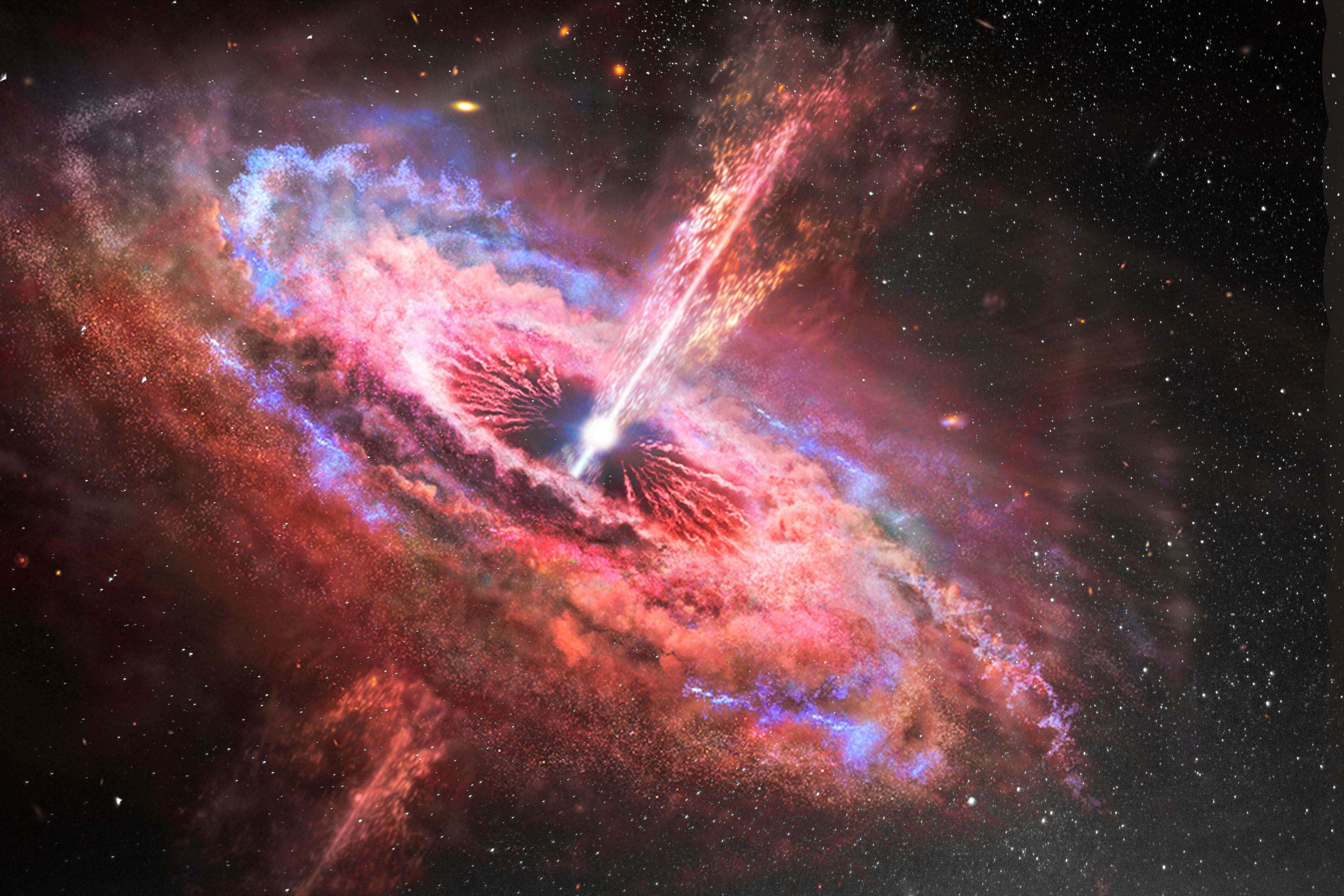Astronomers Are Now Able To Forecast When A Giant Black Hole Eats Meals After Watching It Consume A Nearby Star As A Stellar Snack

After watching a giant black hole consume a nearby star, astronomers have been able to successfully forecast when it takes its meals, bringing them a step closer to understanding the behavior of colossal black holes.
In 2018, a ground-based survey observed a surge in brightness from a galaxy that was about 860 million light-years away from Earth. The event was triggered by a supermassive black hole from a faraway galaxy shredding and consuming a star.
As the star’s mangled material approached the black hole, it heated up and blasted X-ray and ultraviolet emissions that were strong enough for space telescopes to detect. A little over a year later, the signals faded, suggesting that the black hole had completely devoured the star.
Then, two years later, the signals appeared again, showing that the star’s core actually survived while its outer cores were demolished.
Based on this data, along with telescope data about the star and its orbit, a team of researchers created a model to predict that the black hole’s second meal would end in August 2023. The results were confirmed with follow-up observations taken by the Chandra X-ray Telescope.
“The telltale sign of this stellar snack ending would be a sudden drop in the X-rays, and that’s exactly what we see in our Chandra observations on Aug. 14, 2023,” Dheeraj Pasham, the leader of the new study from the Massachusetts Institute of Technology. “Our data show that in August last year, the black hole was essentially wiping its mouth and pushing back from the table.”
The star that would serve as the black hole’s meal had a companion star, which was tossed into space at a speed of 621 miles per second, according to Muryel Guolo, a co-author of the study from John Hopkins University in Baltimore.
“The doomed star was forced to make a drastic change in companions—from another star to a giant black hole,” said Guolo. “Its stellar partner escaped, but it did not.”
Ultimately, the star was polished off in multiple small portions, which was unconventional behavior of a black hole.
elen31 – stock.adobe.com – illustrative purposes only
Sign up for Chip Chick’s newsletter and get stories like this delivered to your inbox.
Usually, black holes finish eating the entirety of a star at once. The researchers believe the new finding offers another way of studying the physics of black hole behavior.
From recent data gathered by Chandra X-ray Observatory and Neil Gehrels Swift Observatory, the researchers estimated that the shredded star makes its nearest approach to the black hole every 3.5 years.
If any part of the star remains, the black hole’s third meal will begin between May and August next year.
The feast would last for almost two years. The second meal was smaller than the first, so it’s safe to say that the third will be more of a snack than anything.
The paper was published in The Astrophysical Journal Letters.
Welcome to Billionaire Club Co LLC, your gateway to a brand-new social media experience! Sign up today and dive into over 10,000 fresh daily articles and videos curated just for your enjoyment. Enjoy the ad free experience, unlimited content interactions, and get that coveted blue check verification—all for just $1 a month!
Account Frozen
Your account is frozen. You can still view content but cannot interact with it.
Please go to your settings to update your account status.
Open Profile Settings